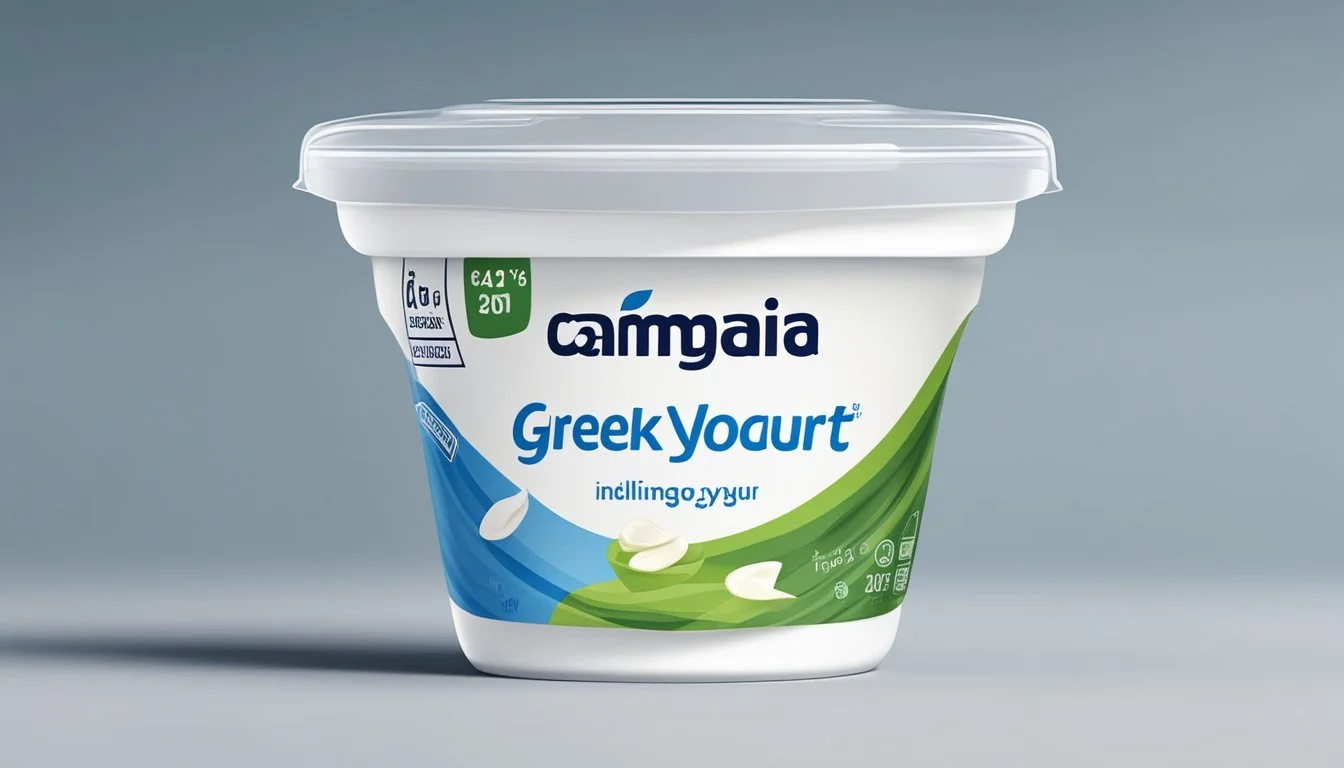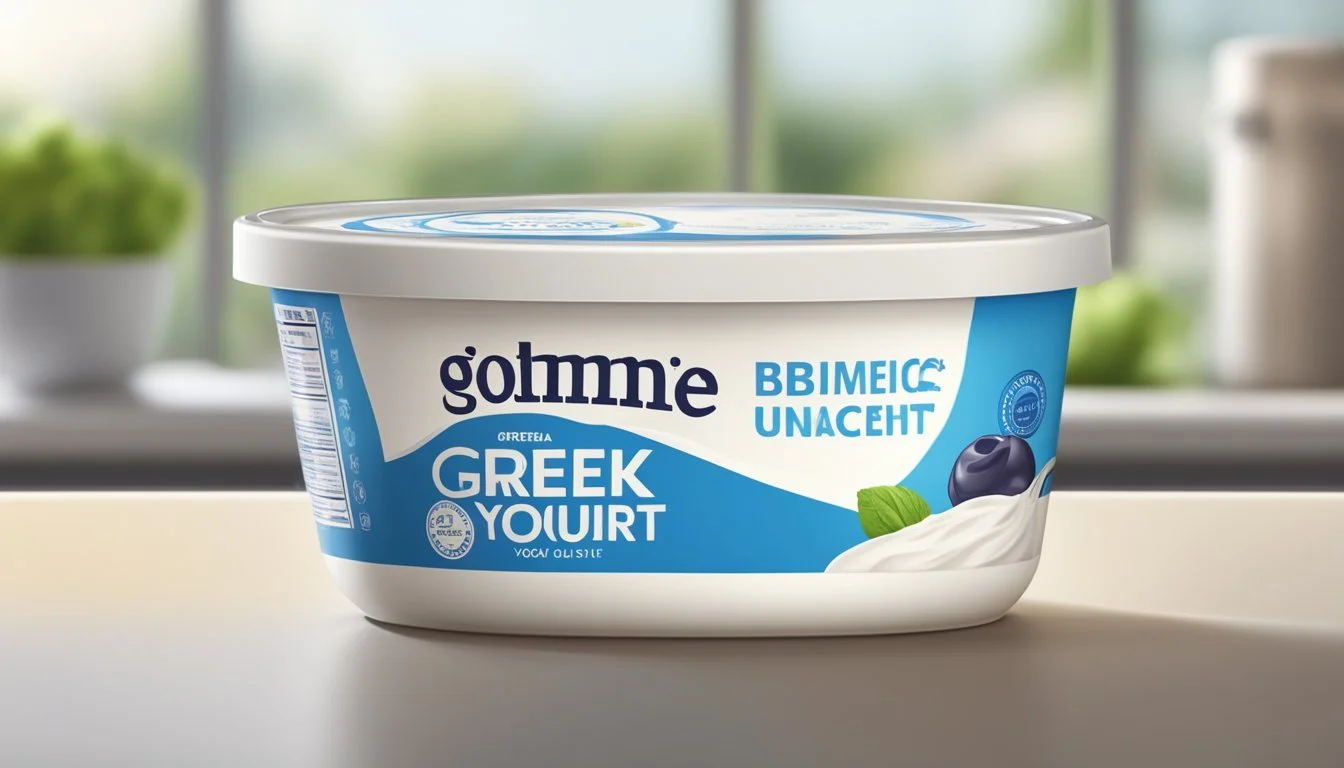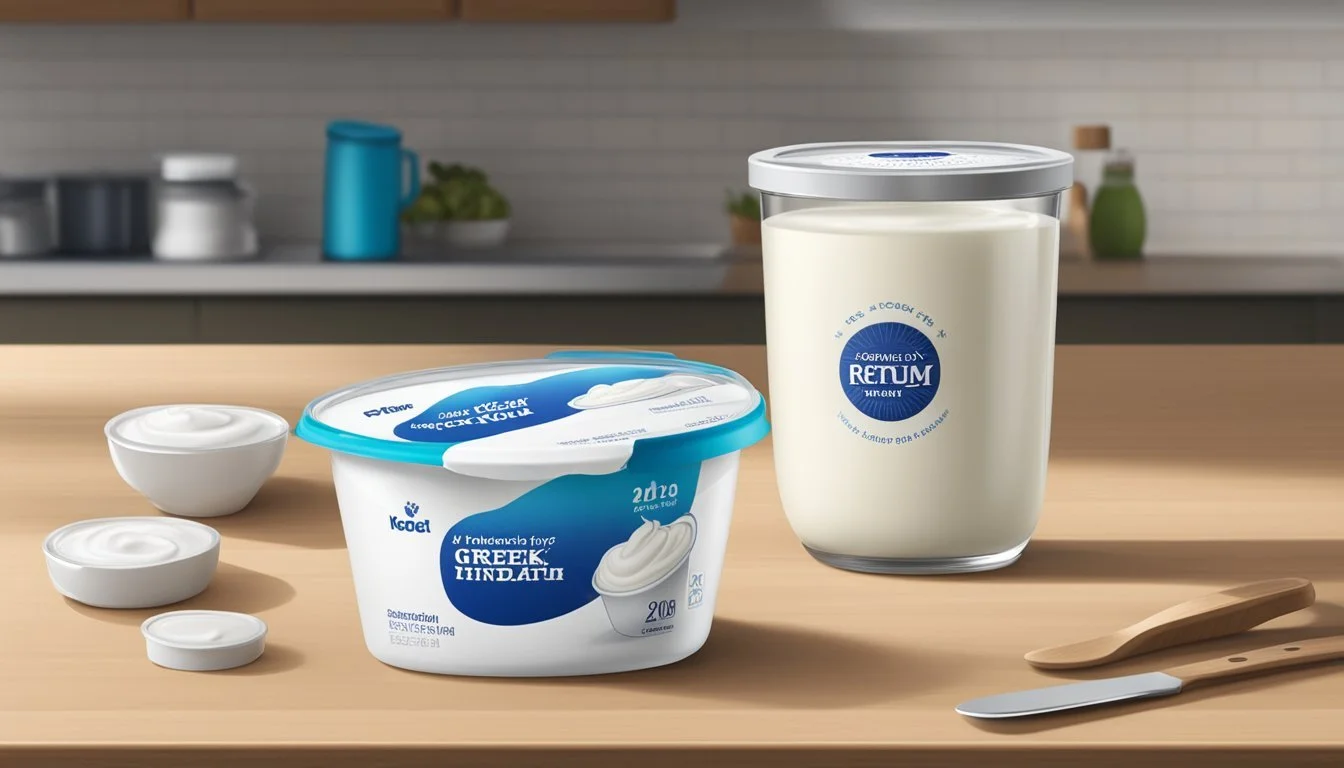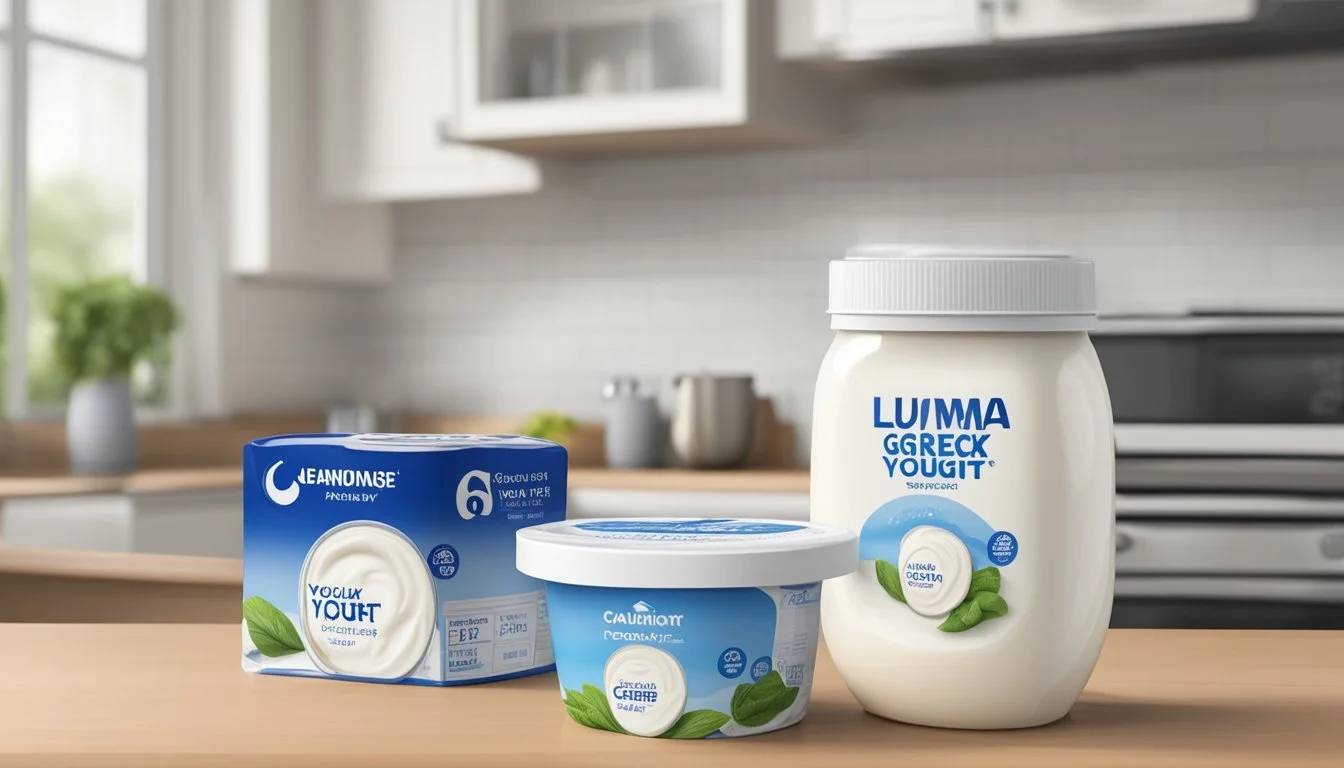How Long Does Greek Yogurt Last?
Shelf Life and Storage Tips
Greek yogurt, known for its thick texture and rich taste, has become a staple in many households due to its health benefits and versatility. The longevity of Greek yogurt in the refrigerator is a common question among consumers aiming to reduce waste and ensure food safety. Typically, Greek yogurt can last beyond its printed date if stored properly at or below 40 degrees Fahrenheit. The printed date is often a "Best If Used By/Before" or "Use-By" date, which suggests when the product is expected to be at its peak quality rather than an expiration date.
Once the seal is broken, Greek yogurt's shelf life can vary. It is generally recommended to consume it within a week to preserve its quality and freshness. If stored unopened and refrigerated, it can often last 1 to 2 weeks past the "Use-By" date. However, it is essential to spot signs of spoilage such as an off smell, mold growth or an altered texture before consumption.
Consumers should also consider that individual brands may have different shelf lives due to their unique ingredients or production processes. It is important to err on the side of caution and use sensory cues as a guide – checking the yogurt for changes in smell, taste or appearance – to determine its safety for consumption. Practicing proper food storage and monitoring the temperature within the refrigerator can help to maximize the longevity of Greek yogurt.
Understanding Greek Yogurt
Greek yogurt is a rich, creamy dairy product known for its high protein content and health benefits. It distinguishes itself from traditional yogurt through its unique composition and nutritional profile.
Nutritional Benefits
Greek yogurt holds a significant amount of protein, which is essential for muscle repair and growth. It also contains calcium, vital for bone health. The presence of probiotics in Greek yogurt supports the immune system by maintaining gut health. These live cultures or probiotics enhance digestive health and can help balance the body's natural flora.
Protein: Approximately 10 grams per 100 grams
Calcium: Roughly 110 milligrams per 100 grams
Probiotics: Contains Lactobacillus acidophilus and others
Composition and Texture
The consistency of Greek yogurt is thicker and creamier compared to regular yogurt. This texture is due to the straining process it undergoes, removing excess whey and lactose. The result is a concentrated dairy product with a tart taste, attributed to its lactic acid content. Its dense composition makes it a versatile ingredient in both savory and sweet dishes.
Texture: Thick, creamy
Straining Process: Removes whey and lactose
Lactic Acid: Contributes to the tart flavor
Expiration and Shelf Life
Knowing the shelf life of Greek yogurt and understanding the labeling will help ensure individuals consume the product while it's fresh and safe. Careful storage is paramount for maintaining quality and safety.
Labeling and Federal Regulations
Federal law does not mandate expiration dates on yogurt, but it does require them on infant formula. Yogurt manufacturers often use a "Sell-By," "Use-By," or "Best If Used By/Before" date to indicate the period during which the product is expected to be at its peak quality. This is not a safety date.
Sell-By Date: informs the store how long to display the product for sale.
Use-By/Best If Used Before: indicates when a product will be of best flavor or quality.
The actual shelf life may extend beyond these dates, and proper storage is crucial for this extension.
Signs of Spoilage
Spoilage is a concern with any dairy product, and several signs indicate Greek yogurt has gone bad:
Odor: A sour smell distinct from the usual tart yogurt scent.
Texture: Any signs of liquid segregation or a curdled texture, although some whey separation is normal.
Mold: The presence of mold or any other fungal growth.
Storage:
Temperature: Refrigeration at or below 40 degrees Fahrenheit is essential to maximize shelf life.
Duration: Greek yogurt can generally last for 7-10 days after the printed date if stored correctly.
Spoiled yogurt should not be consumed due to the risk of foodborne illness.
Storing Greek Yogurt
Proper storage of Greek yogurt is essential to maintain its freshness and extend its shelf life. Two key methods are refrigeration and freezing, each with its own best practices to ensure food safety and quality.
Refrigeration Best Practices
When storing Greek yogurt in the refrigerator, it should be kept at a constant temperature. The ideal temperature range for refrigerating Greek yogurt is between 34°F and 38°F. Greek yogurt is sensitive to temperature fluctuations, which can compromise its quality and safety. Always store it in an airtight container to prevent contamination and absorption of other food odors.
Container: Use original packaging if unopened; otherwise transfer to an airtight container.
Location: Keep it in the main body of the fridge, away from the door where temperature varies.
Duration: Properly stored, Greek yogurt can last 1-2 weeks past the printed date.
Freezing Greek Yogurt
Freezing Greek yogurt can significantly extend its shelf life, but it may alter the texture, making it grainy or separated when thawed. To freeze Greek yogurt:
Preparation: Spoon yogurt into an ice cube tray for portion control.
Storage: Once frozen, transfer cubes to a freezer bag, removing excess air.
Temperature: Keep your freezer at 0°F for optimal food safety.
Duration: Frozen Greek yogurt can be safe for up to two months.
Remember that while freezing can keep Greek yogurt safe, the best quality is maintained through refrigeration and consuming within the recommended time frame.
Identifying Spoiled Greek Yogurt
It is crucial to understand how to differentiate fresh Greek yogurt from a product that has gone bad to ensure food safety and avoid consumption of spoiled foods. The attributes that one should inspect include visual aspects and odors, which can provide clear indications of spoilage.
Visual Indicators
One can observe several visual signs to determine if Greek yogurt has spoiled. These include:
Mold: The presence of mold, especially on the surface, signifies spoilage. Mold may appear in various colors, including green, black, or white.
Texture: Spoiled Greek yogurt often exhibits a lumpy or unusually gelatinous texture, deviating from its typically smooth consistency.
Discoloration: Any change in color from the natural creamy white suggests that the yogurt should no longer be consumed.
Olfactory Signs
Spoilage can also be detected by smell, a sense closely linked to taste and quality:
Sour Smell: While Greek yogurt has a naturally tangy scent, an excessively sour or off-putting smell is a strong indicator of spoilage.
Unpleasant Odors: Any unusual or unpleasant odors are clear signs that the yogurt has gone bad and should be discarded.
If Greek yogurt has been stored at room temperature above 40°F for over two hours, it is more susceptible to spoilage and should not be consumed. Using these visual and olfactory checks ensures the consumption of Greek yogurt at its optimal quality and safety.
Preventing Spoilage
To maximize the shelf life and safety of Greek yogurt, proper storage and handling are essential. These strategies combat bacteria growth, preserve the yogurt's smooth texture, and prevent spoilage.
Handling and Usage Tips
Always keep Greek yogurt refrigerated at 35°F to 40°F, and use a clean spoon each time to avoid contamination.
Do not leave Greek yogurt at room temperature for more than two hours; in temperatures over 90°F, reduce this time to one hour.
Extending Shelf Life
For extended storage, Greek yogurt can be frozen. Freeze in an airtight container or small cubes for up to two months to minimize freezer burn.
To maintain quality, add a thin layer of oil to the surface before sealing it, which can help keep out bacteria and preserve the yogurt's protein content.
Usage of Greek Yogurt Beyond Expiration
When Greek yogurt passes its expiration date, it doesn't necessarily mean it's unusable. Consumers can often still rely on it for a variety of culinary applications, provided it shows no signs of spoilage, such as an off smell, mold, or a severely altered taste.
Culinary Applications
Recipe Adaptation: A slightly tangier Greek yogurt can be perfectly suitable for recipes where its flavor can complement the other ingredients. It works exceptionally well in dips, where its creamy texture blends smoothly with herbs and spices. Similarly, tangy Greek yogurt can enhance salad dressings or sauces, contributing to their thickness and flavor profile.
Breakfast: Blend Greek yogurt into a smoothie or use as a base for breakfast bowls, topped with granola, fruit, and a drizzle of honey.
Baked Goods: Substituting expired Greek yogurt into recipes for baked goods can introduce a desirable moistness. It's particularly useful for making cakes, muffins, and breads.
Gourmet Twists: Innovative dishes like strawberry-chocolate Greek yogurt bark or red lentil fritters with a ginger-yogurt sauce can still be prepared using Greek yogurt that's past its prime.
Non-Eating Purposes
Beauty Treatments: Greek yogurt contains lactic acid, which makes it a suitable ingredient for homemade face masks. The creaminess of the yogurt can provide a soothing and hydrating effect on the skin.
Marinating Agent: Greek yogurt's acid content can tenderize meats effectively, making it a key component in a marinade for poultry, lamb, or beef.
In each of these contexts, users should critically evaluate the yogurt's condition, ensuring it is still safe to use. If there's any doubt about the yogurt's freshness or signs of spoiling, it should not be consumed or used.
Health Considerations
When it comes to Greek yogurt, consumers should be mindful of health considerations, primarily focusing on food safety and digestive concerns. These points are essential to ensure the yogurt's consumption does not lead to adverse health effects.
Food Safety
Foodborne Illness: Greek yogurt is typically a safe product when handled and stored properly. However, consuming Greek yogurt that has been stored beyond its shelf life or exposed to improper temperatures increases the risk of foodborne illness. Key symptoms to be aware of include vomiting, diarrhea, and stomach aches.
Labeling: Unlike infant formula, which has federally mandated dating requirements, the dates on Greek yogurt containers often indicate peak quality rather than safety.
Storage: Proper refrigeration at or below 40°F (4°C) is crucial to retard the growth of harmful bacteria.
Yeast and Mold: Over time, Greek yogurt can develop yeast or mold, making it unsafe to eat. If the yogurt has a sour smell, a change in texture, or visible mold, it should be discarded.
Digestive Concerns
Expired Product: While some individuals might tolerate Greek yogurt that is slightly beyond its "best by" date, others could experience digestive distress. This typically presents as temporary gastrointestinal symptoms, such as mild stomach discomfort.
Personal Sensitivity: Each person's tolerance to expired or nearly expired yogurt may vary. While one individual might not feel any effects, another might have stronger reactions.
By adhering to proper storage guidelines and paying close attention to the signs of spoilage, consumers can help ensure that Greek yogurt remains a safe and healthy addition to their diet.
Making an Informed Purchase
When selecting Greek yogurt, consumers should focus on quality and label information to ensure they purchase a nutritious and fresh product.
Selecting High-Quality Greek Yogurt
Consumers should look for Greek yogurt from reputable brands known for their commitment to quality. A high-quality Greek yogurt typically has a thick, creamy texture and a rich taste. It should not have a rancid smell, which can indicate spoilage. Utilizing one's senses to assess freshness is crucial; the yogurt should smell fresh and have a consistent color without any signs of discoloration.
Reading and Understanding Labels
Understanding labels is key to making an informed purchase. Consumers should check the label for the "Best If Used By/Before" or "Use-By" date.
"Best If Used By/Before": This suggests when the product may start to lose its optimal flavor and texture but is still safe to consume.
"Use-By": This date is the last date recommended for the product’s peak quality, per the manufacturer.
Additionally, one should read the nutritional information to confirm the Greek yogurt aligns with their dietary preferences. Labels also often indicate whether the yogurt contains live and active cultures, which are beneficial to health. Manufacturers may include proper storage instructions on the label to maintain the product's freshness after purchase.
Creative Uses for Greek Yogurt
Greek yogurt's creamy texture and tangy flavor make it a versatile ingredient, suitable for enhancing a variety of recipes or enriching one's daily diet.
Versatility in Recipes
Greek yogurt can substitute for mayonnaise or sour cream, offering a healthier alternative while maintaining a creamy consistency. Adding it to dressings or dips enhances not only flavor but also nutritional content, especially when paired with herbs and spices. For the sweet-toothed, Greek yogurt works wonderfully as a base in parfaits, topped with granola, fresh fruit, and a drizzle of honey.
Breakfast: A staple morning option, Greek yogurt can be mixed with granola, nuts, and fruits for a nutritious start to the day.
Baking: It can be incorporated into batter or dough of baked goods to add moisture and a slight tang.
Marinades: The yogurt tenderizes meat in marinades and promotes digestion with its active cultures.
Greek Yogurt in Daily Diet
Integrating Greek yogurt into daily meals contributes to an intake of vital vitamins and minerals. As a snack, its high protein content helps in satiety and muscle repair, and regular consumption supports digestive health. Greek yogurt can elevate the experience of classic dishes like baked potatoes, tacos, or soups with its rich texture and ability to blend with a wide array of flavors.
Smoothies: Greek yogurt increases the protein content in smoothies while giving them a creamier texture.
Sauces and Soups: When stirred into sauces or soups, it adds a creamy dimension without the heaviness of cream.
Greek yogurt is a multifaceted ingredient that chefs and home cooks alike can depend on to diversify their culinary experiences. Whether one seeks to enhance their meals with extra protein or explore new flavor profiles, Greek yogurt remains a reliable and nutritious choice.
Understanding Dairy Alternatives
In the realm of dairy alternatives, consumers often seek options that closely mimic the taste and texture of traditional dairy products. These alternatives are designed to offer a similar nutritional profile and cooking or baking versatility.
Non-Dairy Substitutes for Greek Yogurt
Non-dairy yogurt often leverages a variety of plant-based ingredients, like nuts, soy, coconut, oats, or peas, as foundational components. These yogurts integrate bacterial cultures and fermentation processes akin to dairy-based yogurt, to achieve the creamy consistency and tangy flavor consumers expect.
Base Ingredient Common Brands Notes Almond Almond Breeze, Silk Rich in vitamin E, often less creamy than dairy yogurt. Soy Silk, So Delicious Contains high-quality plant protein, comparable to dairy. Coconut So Delicious, COYO Higher in fat, can impart a coconut flavor. Oat Nancy's, Oatly Naturally sweeter, might be fortified with extra vitamins.
One should note, while non-dairy alternatives may not contain lactose, making them suitable for those with lactose intolerance or milk allergies, the nutritional content can vary significantly. Some may lack the protein content found in Greek yogurt, while others may be fortified to compensate.
It is imperative to read labels carefully, as certain brands might add sugars or preservatives to enhance flavor and shelf life. In terms of storage, opened non-dairy yogurt typically lasts about seven to ten days in the refrigerator, echoing the lifespan of its dairy counterpart. Unopened, these products may be safe for consumption up to two weeks beyond the printed "best by" date. Always inspect the product for signs of spoilage such as mold, off-smell, or color changes before consuming.
Environmental Impact
Producing Greek yogurt demands significant resources and leads to various environmental concerns, particularly in terms of food waste.
Greek Yogurt and Food Waste
Greek yogurt production necessitates more milk than traditional yogurt, which inherently increases resource use. A notable environmental concern is the by-product, whey, a liquid remaining after milk has been strained. While some whey can be repurposed for other food products or animal feed, the excess can contribute to food waste. This can lead to several issues:
Resource overuse: The large amounts of milk required for Greek yogurt result in sizable water and land utilization.
Whey disposal: The proper handling and disposal of whey are necessary to prevent pollution and reduce the burden on waste management systems.
Management of whey by-product is critical; failure to do so can lead to unnecessary food waste and environmental stress. The food industry is encouraged to explore innovative ways of utilizing this by-product to mitigate the environmental impact.
Color Changes and Texture
When assessing the quality of Greek yogurt, one can look for two key indicators: changes in color and alterations in texture. These signs can help determine if the yogurt has surpassed its prime.
Separation and Whey Leakage
Greek yogurt typically possesses a smooth texture. However, over time, it's natural for the yogurt to experience some separation, where the liquid, known as whey, may start to leak out. This separation can be harmless, and the whey can simply be stirred back into the yogurt for a consistent texture. However, if the yogurt appears excessively liquid or the separation is accompanied by a curdled texture, this could indicate that the yogurt is no longer fresh.
Discoloration is another signal that Greek yogurt may have spoiled. Fresh Greek yogurt should have a uniform pale white or off-white color. If one notes any discoloration or spots that appear to be mold, the yogurt should not be consumed.
In summary, Greek yogurt's appearance and consistency are significant factors in assessing its freshness. A smooth texture and consistent color are indicative of good quality, while separation beyond a normal degree, notably if the texture has become curdled, or any changes in color, are warning signs that the yogurt may have gone bad.
Additional Tips and Tricks
Effectively storing Greek yogurt maximizes freshness and taste. Understanding the optimal conditions for both opened and unopened containers, as well as mixing strategies at home, can ensure that the yogurt stays delicious and safe to consume.
Storing Opened vs. Unopened Containers
Opened Containers:
To keep opened Greek yogurt fresh, it should be stored in the refrigerator at or below 40 degrees Fahrenheit (4 degrees Celsius).
An opened container, once refrigerated, can generally last one to two weeks.
The container should be sealed tightly with a lid or plastic wrap to avoid contamination and preserve its quality.
Unopened Containers:
Unopened Greek yogurt should be stored in the fridge, respecting the "Best If Used By/Before" date printed on the packaging.
An unopened container often can remain fresh up to two weeks past this date, providing the refrigerator maintains a consistent and cold temperature.
Mixing with Ingredients at Home
Fresh and Frozen Fruit:
Incorporating fresh fruit into Greek yogurt should be done right before consumption to avoid excess moisture, which could lead to spoilage.
When using frozen fruit, one should mix it with the yogurt while still frozen. This helps to keep the yogurt cold and delay spoilage.
Signs of Spoilage:
Be vigilant for signs of spoilage such as sour smell, mold, discoloration, or unusual texture. These indicate that the yogurt should not be consumed.
Home-mixed ingredients can introduce bacteria, so these additions should be fresh and the yogurt should be eaten promptly.













